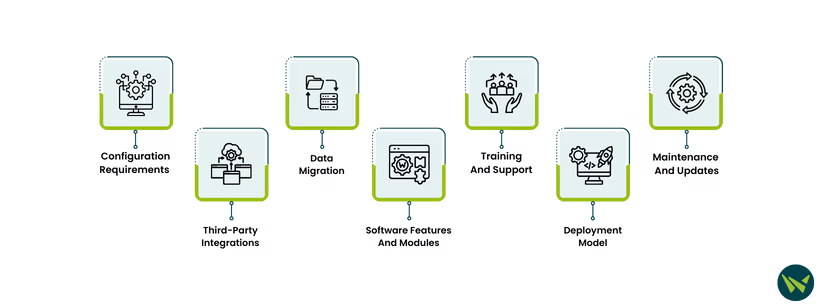Oracle Cerner EMR, is a leading electronic medical record (EMR) provider, holding the second-largest market share in the U.S. acute care market with approximately 25%. Many health systems and medical centers, including a growing number of smaller hospitals with fewer than 200 beds, rely on Cerner for its comprehensive and scalable solutions.
In Summary, the starting price for Cerner is around $25 per user per month for their most affordable package (cloud based). This can change depending on the complexity, features, maintenance and system for either a hospital or a small time clinic. For the former you're looking at costs ranging between $1.5m-$13m atleast, without maintenance fees.

However, the cost of implementing Cerner is not straightforward and depends on factors such as facility size, required software modules, and specific contract terms. Smaller practices typically incur lower costs, while large hospitals may invest millions of dollars in implementation and ongoing maintenance.
In this guide, we will explore the factors that influence Cerner's pricing, provide estimates for different healthcare settings, and examine case studies to help you better understand the costs associated with this software.
The total cost of implementing and maintaining Cerner can vary significantly. Here are some key factors that influence pricing:

Configuration Requirements
Healthcare organizations customize user roles, security settings, audit services, and data mapping during the system setup process. This process often requires professional services, which add to the overall cost. Based on our research, the cost of customizing Cerner software can range from $1,000 to $1,000,000, depending on the size and complexity of the healthcare organization. Larger hospitals with extensive integrations and complex workflows may incur costs in the millions.
Third-Party Integrations
Most medical centers and hospitals require third-party applications, such as billing systems, imaging software, or patient engagement tools, to extend Cerner’s capabilities. These integrations may come with additional licensing fees and setup costs. For example, Cerner offers APIs for custom integrations, with some sources indicating that pricing starts at around $15,000 per year for standard API services and $25,000 for advanced services. However, actual costs may vary based on specific requirements.
Data Migration
Migrating data from legacy systems to Cerner’s EMR platform can be a labor-intensive and costly process. Expenses vary based on the volume and complexity of the data being transferred. On average, the cost per patient record typically ranges between $40 to $100, which can add up significantly for large healthcare organizations.
Software Features And Modules
Cerner offers a range of modules designed for different healthcare needs, each with a custom pricing structure. Its core modules, such as PowerChart, Pharmacy Inpatient, and Revenue Cycle Management, come with separate licensing fees. Additionally, some specialized features like Antimicrobial Usage Reporting often require multiple licenses or add-ons, which further increases costs.
Training And Support
In addition to licensing and implementation costs, healthcare organizations should budget for training and ongoing support. These expenses depend on factors such as the organization’s size and number of users. Larger hospitals often require extensive training programs, while smaller practices may need minimal onboarding. On average, training costs can range from $2,000 to $1,000,000 based on the healthcare facility's needs.
Deployment Model
The cost of Cerner EMR also depends on the deployment model. It offers both cloud-based and on-premise options, each impacting initial and ongoing costs. Cloud-based models have lower upfront expenses but require ongoing subscription fees, whereas on-premise deployments involve higher initial investments in hardware, infrastructure, and maintenance.
Maintenance And Updates
Regular maintenance and updates are important for keeping Cerner secure, efficient, and compliant with evolving regulations. The expenses associated with these updates typically include software patches, system upgrades, and security enhancements. Based on our discussion with industry advisors, hospitals with 100–500 beds can expect annual maintenance and support costs to range from $150,000 to $1 million. In comparison, health systems with over 500 beds may pay $1 million to $2 million or more annually.
In addition to the factors mentioned above, healthcare organizations should also consider the size and type of their facility to determine overall costs accurately. Below is a breakdown of estimated costs for small, medium, and large hospitals:

Small Hospitals (Up to 100 Beds)
Smaller hospitals typically have fewer integration and customization needs, which keeps costs relatively lower. However, they still require essential EMR functionalities, training, and maintenance. Here’s what they can expect in terms of costs:
- Initial Setup Costs: $1.5–$3 million
- Annual Maintenance Costs: $500,000–$800,000
Medium Hospitals (100–500 Beds)
Medium-sized hospitals often require more advanced modules, third-party integrations, and comprehensive training, leading to higher implementation and maintenance costs. Here’s a look at the typical costs they may incur:
- Initial Setup Costs: $3–$12 million
- Annual Maintenance Costs: $800,000–$1.5 million
Large Hospitals (500+ Beds)
Larger hospitals need more customization, enterprise-level integrations, and ongoing system improvements, which make costs significantly higher. Below is an overview of the costs associated with implementing Cerner in large healthcare facilities:
- Initial Setup Costs: $12–$30 million
- Annual Maintenance Costs: $1.5–$3 million
Disclaimer: The pricing estimates have been sourced from third-party websites and are subject to change.
Below are some examples of healthcare organizations that have invested in Cerner (now Oracle Health), along with their implementation costs, to give you a clearer understanding of the financial commitment required:
These examples demonstrate how the implementation costs for Cerner EHR can vary widely, ranging from millions for smaller hospitals to tens of billions for large-scale systems like the Department of Veterans Affairs.
Implementing Cerner can be a substantial financial investment for your healthcare organization, requiring you to carefully assess its costs and long-term impact. You should evaluate both the initial investment and ongoing expenses to ensure it aligns with your budget and operational goals. Taking a strategic approach will help you maximize the value of your investment and maintain financial stability.
If you are planning to invest in this software and want to learn more about how to implement it effectively, check out our comprehensive guide on how to use Cerner.
